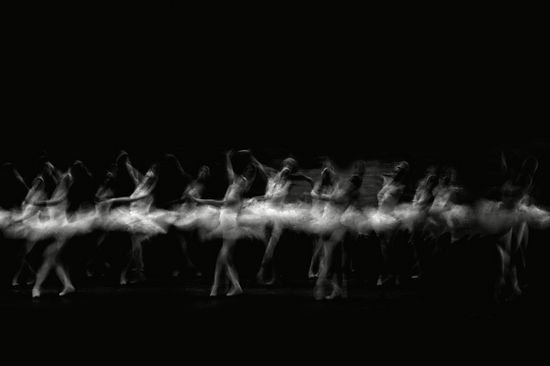Responsive Toe Pads Product Design
Pointe shoes are worn by ballet dancers while performing “en pointe,” dancing on the tip of their toes. Dancing en pointe is fundamental to advanced ballet technique with the goal of creating the illusion of weightlessness on stage.
Due to the physically demanding nature of pointe it creates a myriad of human factors issues, especially physical injuries for these athletes. The most common injuries occur in the foot and ankle with “[a]round 85% of dance injuries occur[ing] in the lower extremities.

Pointe shoes are made up of four main parts, the vamp, platform, shank, and box. Figure 2 illustrates the different parts of the shoe and how they coincide with dancers’ foot types. The wide range of foot types and shapes leads dancers to create a highly individual and customized pointe shoe system.
Pointe shoes are traditionally made of densely packed layers of fabric, cardboards, or paper hardened by glue (Pittsburgh Ballet Theatre, n.d.). The outer of the shoe is made of satin typically with a cotton inside. All these materials break down with wear, increasing the risk of injury due to lack of support and stability in the shoe. These compounding factors involved in a dancer’s experience en pointe led us to examine:
How might we promote injury prevention for ballet dancers en pointe
Users and Context
Our User - Female ballet dancers
Advanced to professional experience
Minimum of 5 years en pointe
Minimum of 10 years ballet experience
19-21 years old
The goal of user interviews was to discover common issues among interviewees and how to solve such issues within a smaller scope. Topics explored were pointe shoe preparation, frequency of purchasing pointe shoes, prevention strategies for dying shoes, padding usage, in addition to injuries caused by pointe.
Human Factors
Physical:
Anthropometrics
Injury Protection and Comfort
Perceptual:
Sensory feedback from the shoe
Expectation of pointe shoes
Pain tolerance
Cognitive:
Understanding padding needed and when a shoe is dying
Emotional:
Aesthetic needs
Product Ideation
Pointe shoe discovery box
Box support stickers
Pointe shoe side adjusters
Responsive toe pads
Low-Fi Prototype User Rankings
These prototypes were presented to the same six users and ranked (on a scale of 1-5) by how likely they would be to use them. The toe pads were the most likely to be used so this became the sole design choice for the final prototype.
The responsive toe pads consistently received the rank of first or second. Many users liked the idea of more durable and customizable toe pads as they all wear toe pads in their pointe shoes.

Why Toe Pads?
Physical - Shock absorption helps reduce a large percentage of injuries and chronic ailments and increase general comfort when dancing
Emotional/Aesthetic Needs - Pointe shoes are constricted to wider aesthetics and traditions of the ballet
Cognitive - Confidence in shock absorption to protect toes from injury
Perceptual - Density will not inhibit “feeling the floor”
Human Factors Table
Final Product Composition
Thermo-responsive Fabric - The outer layer of the toe pad will be made from poly(N-isopropylacrylamide), otherwise known as PNIPAM, treated cotton. PNIPAM is a type of shape memory polymer which when used to treat textiles, creates a “smart” textile that is responsive to different types of stimuli. PNIPAM specifically “undergo[es] a reversible phase transition in response to temperature change” where it shrinks at temperatures above 89.6 °F (Rengasamy, 2011). This is beneficial to the design as it allows the toe pad to conform to the dancer's foot and help alleviate friction and therefore blisters and other injuries.
Shock Absorption Material - The main component of the padding lies in the shock absorbing layer which will be made of Sorbothane, a polyether based polyurethane. Sorbothane “absorbs up to 94.7% of impact shock” without taking away the feel of the road for runners who use their insoles. This is applicable for this design for the similar reason of providing cushion without the dancer losing the feeling of the floor.
Wickaway Fabric - The wickaway fabric will be Merino wool. This was primarily chosen for its resistance to odor compared to other moisture-wicking fabrics such as polyester and nylon. It traps the smell to prevent it from emanating outwards. Moisture-wicking fabric also helps to elongate the lifespan of the pointe shoe by helping to prevent sweat from reaching the glue in the box, allowing the dancer to feel supported in their shoe for a longer period of time.









